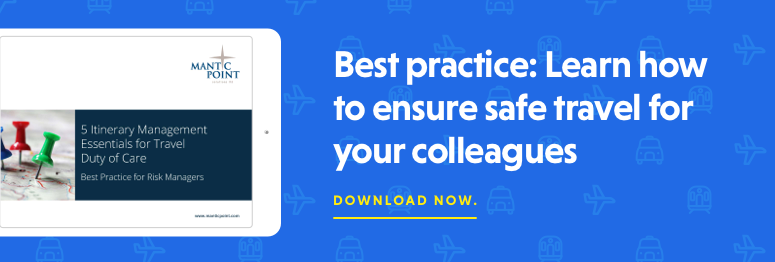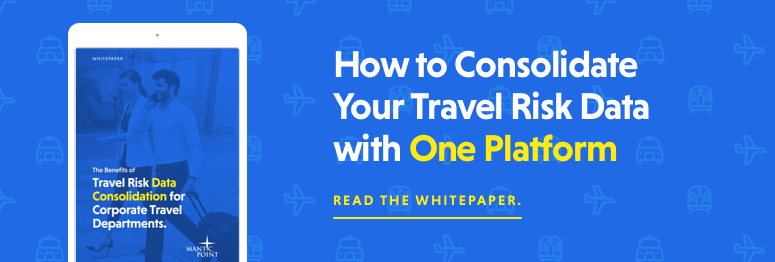Can Bleisure be Reconciled with Duty of Care?
Posted by Mike Atherton on 26 June, 2018
.png?width=750&name=Untitled%20design%20(15).png)
One of the most positive developments in
Bleisure has proved exceptionally popular with travellers — according to 2016 research from Collinson Group, almost three quarters (72%) of business travellers bolt-on additional leisure days to their trips. Nevertheless, it isn’t without its potential drawbacks, the most obvious of which is the question of duty of care. Despite 89% of companies allowing a bleisure component to employee travel, almost a third (31%) do not extend the protection of their corporate travel risk policy to extra days or leisure time.
This might sound fair, indeed a recent survey by International SOS and CAPA (Centre for Aviation) revealed that nine out of ten people believe the responsibility for the leisure portion of business travel falls to the traveller. However, the reality of
Who Holds the Responsibility for Bleisure Travel?
As Peter Harbison, Executive Chairman at CAPA, commented recently: "bleisure is a legal and insurance minefield."
Although it might be common sense to suggest the responsibility for the leisure portion of the trip should fall upon the traveller — after all, they aren’t exactly in the 'course of their employment' while sightseeing — in legal and insurance terms it’s a bit of a grey area.
Due to corporate policies or a sense that there might be encouragement from the employer to engage in leisure activities, as well as the reality that employees are still likely to be expected to respond to client emails and field calls during their ‘holiday’, the line between work and leisure can get blurred. This means highly subjective interpretations of employer liability are possible, making it incredibly difficult to predict the outcome should anything go wrong.
How Can Organisations Mitigate the Risks?
The answer is surprisingly simple: companies need to clearly define how they are willing to support
The line between when the business owes a duty of care and when the employee is outside the protective embrace of their employer is likely to be the deciding factor in who is liable for any injury or loss suffered. So, it’s crucial to create a clear demarcation between the two and make sure your travellers are aware of it.
According to Collinson Group, you should look to do this through issuing key guidance and by taking a few basic steps to counter risk. Some of their suggestions include:
- Setting a limit on the number of days employees can take for leisure purposes. This helps to contain the risk to the company and traveller.
- Stipulating that employees will not be covered for any leisure time that represents too great a departure from their original travel itinerary — for
example additional travel must be within the same region and avoid anywhere ‘high risk’.
- Asserting that if employees are in high-risk areas they must adhere strictly to the elements of corporate policy that protect them from risk. This includes Mobile GPS tracking, maintaining regular contact with the office, attending risk assessments and paying attention to any information communicated through travel risk management software — such as risk updates and notifications.
- Making sure employees are aware that if they aren’t prepared to follow policy during leisure time they need to source their own cover.
We would add to this by reiterating that if you are planning to incorporate
For example, vital risk management functions such as traveller-tracking, employee check-in systems, weather updates and emergency communication should be extended to employees throughout the duration of their trip — whether they’re in a boardroom or touring the Sistine Chapel. This is made surprisingly easy by the fact these functions can often be consolidated into a single travel management app, giving travellers a single contact point for everything they need, accessible from their smartphone.
Bleisure represents a vast seam of potential for business travel: not only is it making trips more rewarding for travellers themselves, it also represents another potential revenue stream for travel management companies. However, this optimism must be tempered with caution; if companies are to avoid potential insurance and legal hot water, then they need to be explicit on their
Our new infographic is a great starting point to learn more about the risks facing travellers and their employers, as well as where you could be managing risk better. For a more in-depth look at best practices for travel risk management and duty of care, download our guide to itinerary management essentials.


